African Bush Elephant Profile
The African Bush Elephant, or Loxodonta Africana, is the largest of the three elephant species, and the largest living land mammal in the world. It can reach up to 4m in height and 10 tons in weight.
It is one of two elephant species on the continent of Africa: the African bush elephant and the African forest elephant. As the names suggest, the two species inhabit different areas and are vastly different in size, with the forest elephant being significantly smaller.
The African bush elephant, also known as the African savanna elephant, inhabits 37 African countries and is found in varied habitats ranging from open and wooded savannas, to some deserts and forests.
The majority of the population is found in Southern and Eastern African countries, including Tanzania, Botswana, Kenya, Namibia and South Africa.
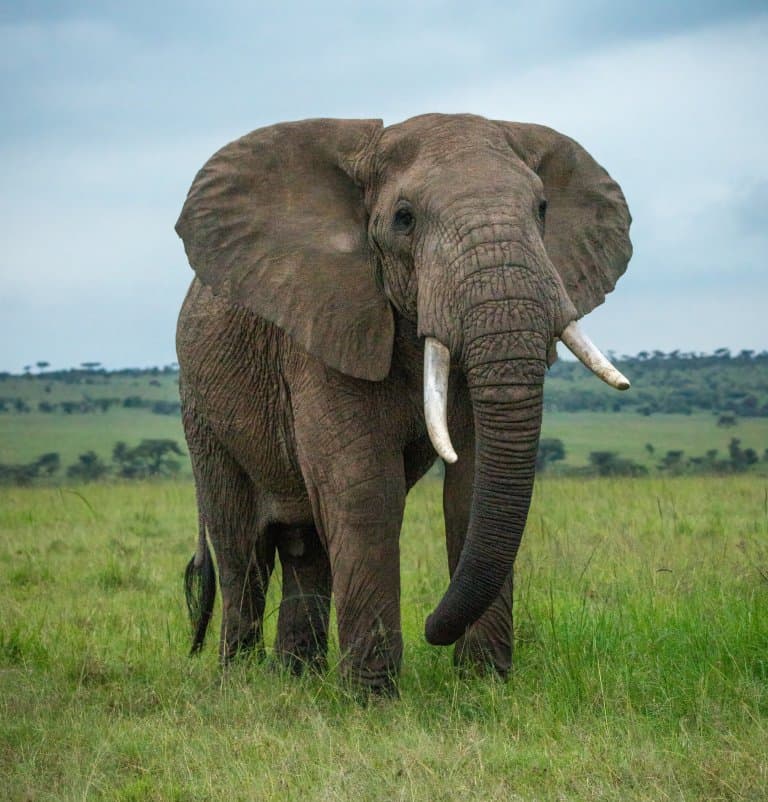
African Bush Elephant Facts Overview
| Habitat: | Ranging from open savanna to desert. Hot, dry regions; grasslands, vegetated areas |
| Location: | Found in 37 countries across the African continent |
| Lifespan: | Up to 70 years |
| Size: | Up to 24ft long and 13ft high in adulthood |
| Weight: | From 6,600lbs (adult female) up to 13,000 lbs (adult male) |
| Color: | Pale to dark grey |
| Diet: | Leaves, bark, grass, foliage, roots, and fruit |
| Predators: | Humans, lions, hyenas, crocodiles |
| No. of Species: | 1 |
| Conservation Status: | Endangered |
The African bush elephant is clearly distinguishable due to its giant size, very large ears and the fact that their front legs are considerably longer than their rear legs. These animals are well-known and often studied, with much known about their population size and groupings.
They exist in matriarchal family units consisting of female elephants, known as cows, and their collective young. The unit is headed by a matriarch, which will be the oldest and largest in the group. Several family groups will often join together to form a ‘clan’ of sometimes hundreds of elephants. The male, or bull, elephants are more solitary and are not usually a part of these family units, only interacting with the families during mating season.
Elephants are herbivores and will feed on grasses, foliage, roots, bark and fruits. During the rainy season they will eat more grasses than they will during dry season. Due to their massive size, they require large amounts of vegetation to sustain their bodies and consequently roam large distances to graze and forage throughout the day. They do not sleep much and spend a lot of time feeding, or travelling in search of food and water.
Due in large part to poachers in the illegal ivory trade, as well as human/wildlife conflict in agricultural areas and extensive habitat loss or degradation caused by human population growth, these gentle giants face an ever increasing struggle for survival and are currently classified as endangered.
Through a combination of education, land protection, collaboration with local farmers and groups, and the creation of ‘wildlife corridors’ to link protected areas of land, more is slowly being done to help protect and preserve these incredible creatures, and to ensure that they continue to roam the African continent for many more hundreds of years.
Interesting African Bush Elephant Facts
1. The African Bush Elephant requires 300-350 pounds of vegetation per day
Being herbivores, elephants require a large intake of food per day to generate enough energy to fuel their giant size. 350lbs of vegetation is around 100 times the average daily intake for one adult human. 1
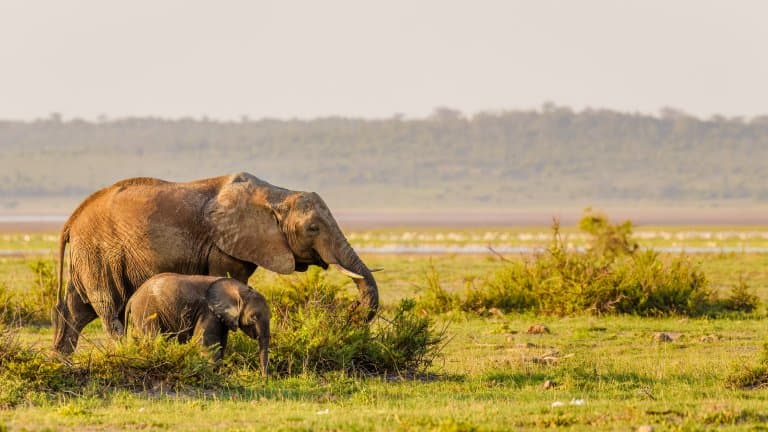
2. Elephants have the longest gestation period among mammals
The gestation period for a female elephant is 22 months. They give birth to a single calf after this time, meaning that the rate of population growth is slow.
Baby elephants weigh up to 200lbs at birth and are already around 3ft tall. Female elephants will usually produce one calf every two to four years.
The slow rate of reproduction combined with the threat from poaching means that there has been a sharp decline in the numbers of elephants on the continent within the last 100 years. 2
3. The ears of the African elephant are shaped like Africa!
One of the ways to distinguish the African bush elephant from its cousin the Asian elephant is to identify the large ears which bear a resemblance to the shape of the African continent.
The African bush elephant and African forest elephant both have similar shaped ears, while the ears of Asian Elephants are shorter and more rounded.
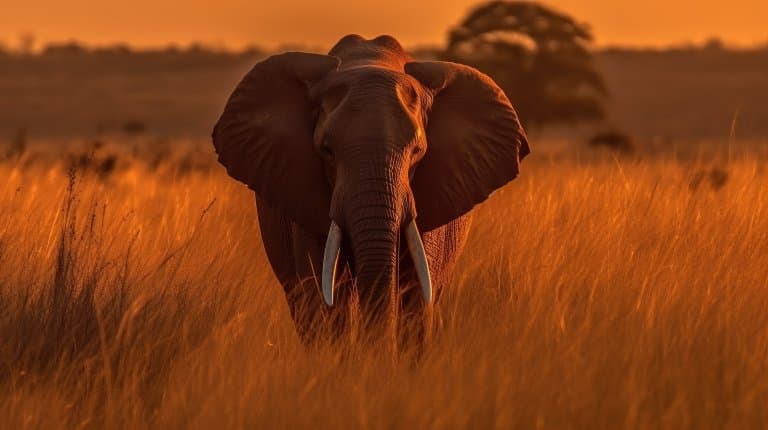
4. Their ears can grow up to 2m!
They can grow up to 2m x 1.5m (6 ft 7 in × 4 ft 11 in) and help regulate body heat as they contain large blood vessels, and can be flapped like a fan to create a cool breeze.
5. The elephant’s upper incisors are what grow to become their tusks
The tusks of an elephant are large and continuously growing teeth.
The bush elephant’s tusks are large and curve outward, in contrast to the tusks of the forest elephant which are straighter and grow downwards.
6. There are more than 40,000 muscles and tendons in an African bush elephant’s trunk
The trunk is actually just a long nose! It is a very strong appendage and is used for a multitude of different tasks: lifting, grasping, tearing and pulling, as well as breathing, smelling and trumpeting. An adult elephant’s trunk is capable of lifting over 400lbs in weight.
At the tip of the trunk of an African elephant, there are two finger-like features which can be used to perform quite delicate tasks such as retrieving and manipulating tiny items. This differs to the Asian elephant which has only one of these ‘fingers’.
They also use their trunks to suck up water, which they can then blow out into their mouths to drink, or mist over their backs for a refreshing bath. 3
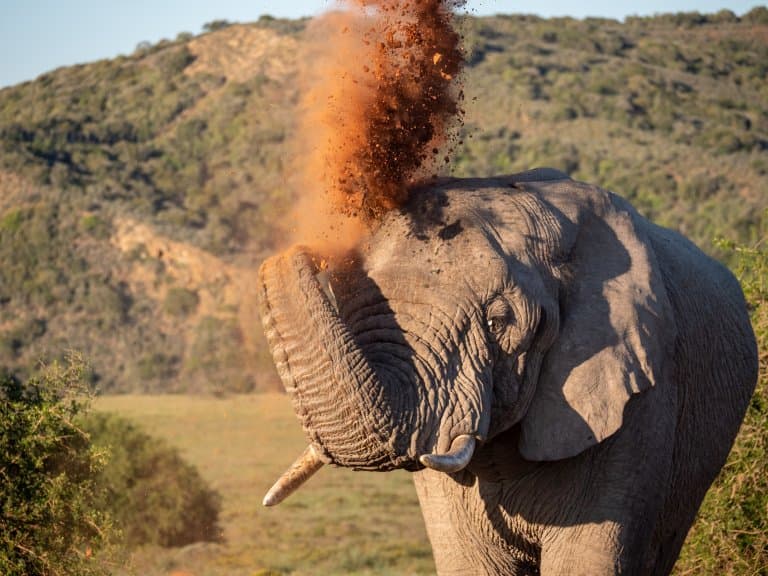
7. The males with the largest tusks father the most young
Both the male and female of the species have obvious tusks. These are used for a variety of purposes, including digging, tearing bark from trees and protecting themselves.
Male elephants use their tusks for fighting over mating rights; this is the reason why the males with the biggest tusks father the most offspring, since they tend to win the mating opportunities with the most number of females.
However, the elephants with the biggest tusks are also the most at risk of poaching. Correspondingly, the animals with the largest tusks have often been removed from the population through this human interference, and it is now seen that some elephants have been born with smaller tusks, or even with no tusks at all.
8. These animals are put at risk through habitat loss and poaching
Given the very large quantities of vegetation and foliage needed for these giant beasts to feed on each day, elephants require a large area to roam and forage.
Human interference through habitat encroachment and degradation of the environment is hugely impacting the lives of the African bush elephant and threatening their very survival.
There are often clashes between farmers and the elephant population, with subsistence farmers sometimes turning to injuring or killing elephants to protect their crops, or as retaliation for crop loss.
Some innovative schemes to enable farmers and the wild elephant population to peacefully coexist have been springing up in different areas with some positive results. These initiatives have included methods such as growing chili plants around the edges of the crops or even the use of fireworks to scare elephants away from cultivated areas.
Sadly, poaching still remains a real risk to the elephant population. Currently the number of elephants lost each year to poaching is at an all-time high of around 25,000 lost each year. There is still much more that needs to be done to protect these majestic creatures. 4
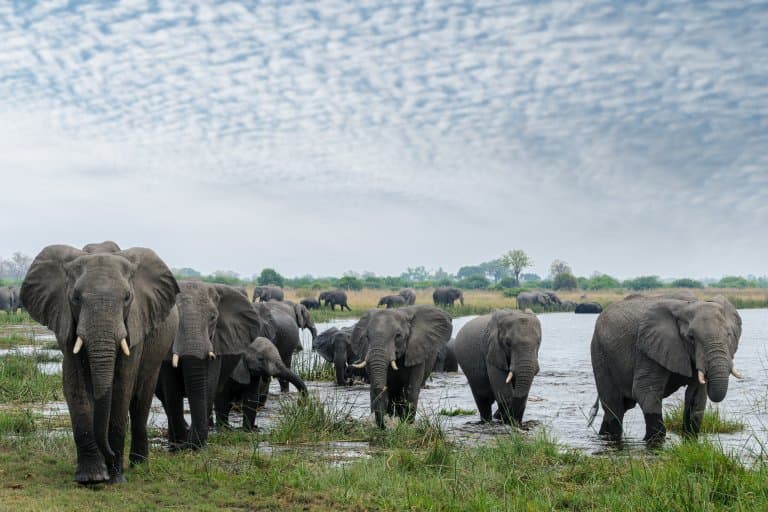
9. Elephants play an important role in the maintenance of their habitat
The elephant population has a huge impact on their habitat through their water use and foraging. For example, in dry seasons, elephants use their tusks and trunks to dig up dry riverbeds and create watering holes that other animals can also drink from.
During their traversing through forest and vegetation they create tracks and pathways also used by other smaller animals, and uprooting trees and shrubs helps to keep the plains clearer for animals such as zebra and impala.
In the central African regions, as much as 30 percent of the tree species depend on elephants for germination and dispersal of seeds through excretion. For these reasons, elephants are known as a ‘keystone species’ for the critical part they play in their ecosystem.
Conservationists have noted that if a protected or regenerated area is seen to be suitable for elephants, it will also then be suitable for a number of other animals such as impala, lions, zebra and giraffe. 5
10. Elephant family members have been observed showing signs of grief over deceased relatives
Sometimes they have been observed returning to the bones of deceased elephants for years to come, using their trunks to caress the bones. 6
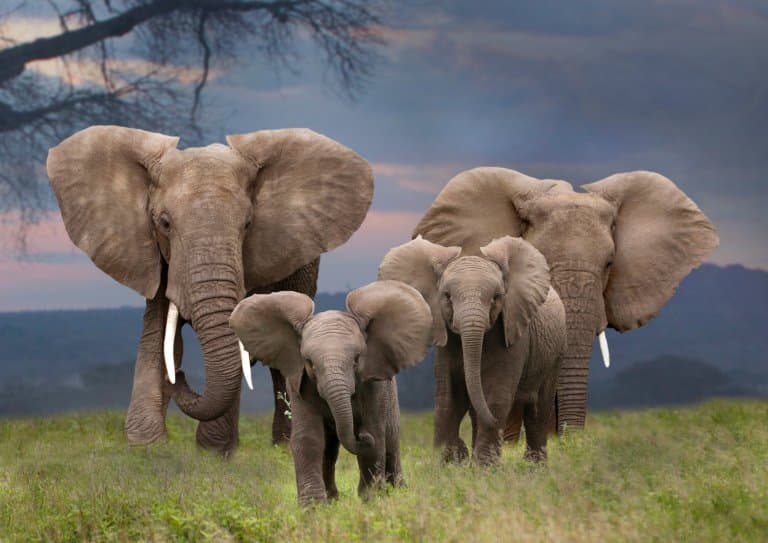
11. Their curved and cracked skin helps with thermoregulation
During very hot conditions, the elephants’ ears will radiate excess heat, allowing the elephant to cool off. Likewise, their wrinkly skin is designed to retain water, in order to help maintain some moisture in hot, dry environments.
12. Elephants can recognize themselves in a mirror
This is something that very few animals are known to do, even domestic cats and dogs will struggle to recognize themselves and often react.
Elephants are one of the smartest animals on the planet, and have shown a remarkable ability to use tools, such as using branches to swat flies or to scratch themselves.
They have also used rocks to drop onto electric fences to break and bypass them without receiving a shock, and moved large cubes to stand on to reach treats. 7
It serves as another reminder of the intelligence of these great beasts and to treat them with respect and dignity that they deserve. 8
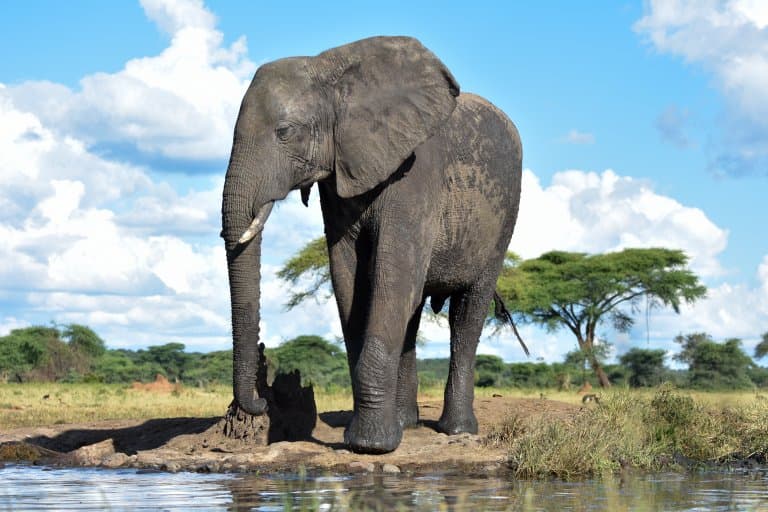
African Bush Elephant Fact-File Summary
Scientific Classification
| Kingdom: | Animalia |
| Phylum: | Chordata |
| Class: | Mammalia |
| Order: | Proboscidea |
| Family: | Elephantidae |
| Genus: | Loxodonta |
| Species Name: |
Loxodonta Africana |
Fact Sources & References
- “African Elephant”, National Geographic.
- “African Elephant”, World Wild Life.
- (2020), “African Bush Elephant”, The Nature Conservancy.
- “Keeping Wide Open Spaces for Elephants”, The Nature Conservancy.
- “African elephant species now Endangered and Critically Endangered”, IUCN.
- “African Savanna Elephant”, World Wide Life.
- Ferris Jabr (2014), “The Science Is In: Elephants Are Even Smarter Than We Realized“, Scientific American.
- “African Bush Elephant”, Virunga.
